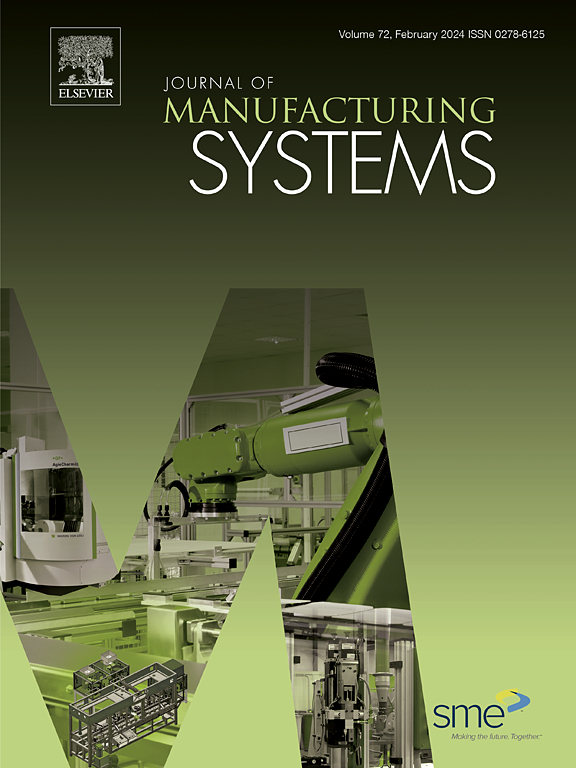A deep graph neural network-based link prediction model for proactive anomaly detection in discrete manufacturing workshop
IF 12.2
1区 工程技术
Q1 ENGINEERING, INDUSTRIAL
引用次数: 0
Abstract
Production anomaly has always been one of the main influencing factors that prevent discrete manufacturing workshops from maintaining stability and agility. Proactive anomaly detection can evaluate the production state and serves as a crucial foundation for preventive maintenance decision. Knowledge graph enables the use of multi-source manufacturing data as a data foundation for proactive anomaly detection. Although rich manufacturing data can comprehensively depict complex manufacturing process, constructing an accurate proactive anomaly detection model remains challenging because of insufficient analysis of the local and temporal features of the manufacturing process. This paper presents a link prediction model based on a deep graph neural network to solve the problem. Specifically, the manufacturing knowledge graph is constructed through OPC UA information model, Bert model and OWL semantic mapping model to organize multi-source heterogeneous data. The deep autoencoder model with local graph learning and the Seq2Seq model with attention mechanism are trained to analyze the neighboring relationship and the temporal correlation of the manufacturing elements, respectively. Finally, the link prediction model is designed by integrating both local and temporal features, with a restructured loss function to improve training effectiveness. Experiments suggest that the designed link prediction model has better prediction performance and is at least 25.6 % higher than the baseline models on the mean reciprocal rank.
求助全文
约1分钟内获得全文
求助全文
来源期刊

Journal of Manufacturing Systems
工程技术-工程:工业
CiteScore
23.30
自引率
13.20%
发文量
216
审稿时长
25 days
期刊介绍:
The Journal of Manufacturing Systems is dedicated to showcasing cutting-edge fundamental and applied research in manufacturing at the systems level. Encompassing products, equipment, people, information, control, and support functions, manufacturing systems play a pivotal role in the economical and competitive development, production, delivery, and total lifecycle of products, meeting market and societal needs.
With a commitment to publishing archival scholarly literature, the journal strives to advance the state of the art in manufacturing systems and foster innovation in crafting efficient, robust, and sustainable manufacturing systems. The focus extends from equipment-level considerations to the broader scope of the extended enterprise. The Journal welcomes research addressing challenges across various scales, including nano, micro, and macro-scale manufacturing, and spanning diverse sectors such as aerospace, automotive, energy, and medical device manufacturing.
 求助内容:
求助内容: 应助结果提醒方式:
应助结果提醒方式:


